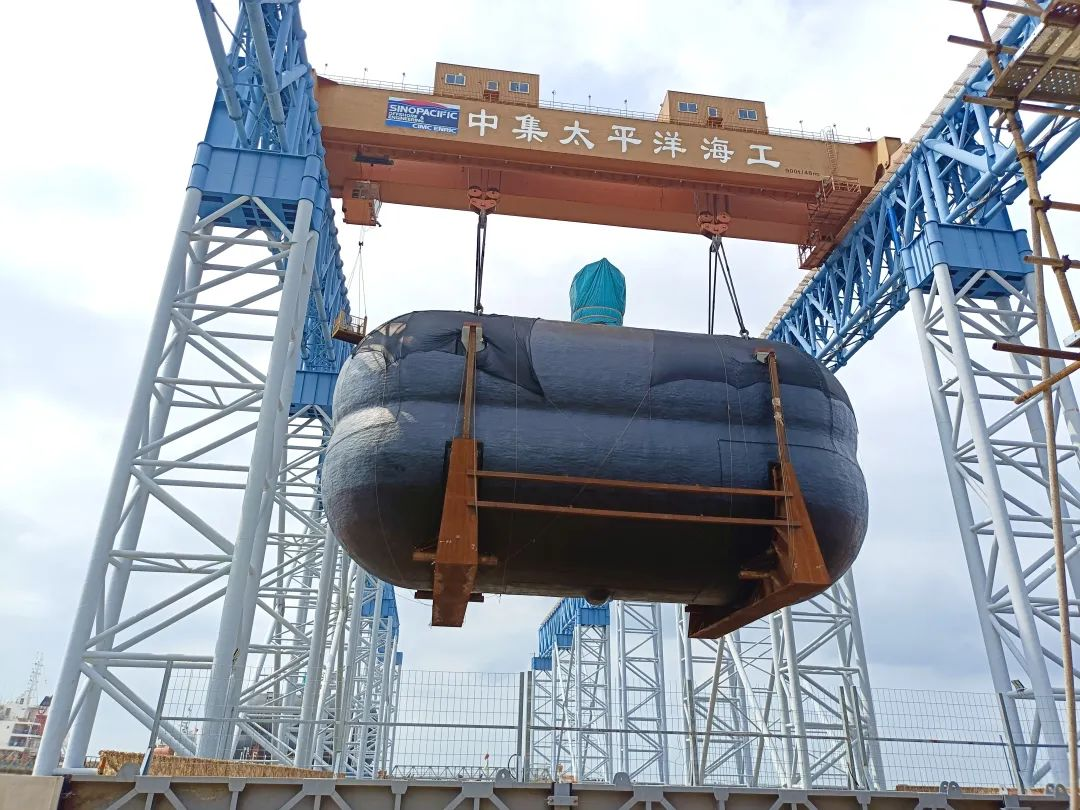On December 16, the fourth set of the world’s first stacked binaural LNG fuel tank with a capacity of 7,500 cubic meters, built by Nantong CIMC Sinopacific Offshore & Engineering Co., Ltd (CIMC SOE), a subsidiary of CIMC Group, for Zhoushan Changhong International Ship Repair Co., Ltd., was successfully loaded and shipped, which will be installed on 11,500 TEU container ships.

In recent years, in addition to liquefied gas carriers, container ships and automobile ro-ro vessels have gradually become the mainstream ship types in the new shipbuilding market. The demand for alternative fuel LNG (liquefied natural gas) has surged, especially large container ships above 12,000 TEUs have gradually occupied the market.
According to Clarkson research’s statistics, the delivery of container ships will reach a new high in 2024, and 77% of the container ships’ hand-held orders are powered by alternative fuels, and the green transformation of ships has become an inevitable trend in the shipping industry.

In response to the demand for greening of ships, the design of fuel tanks is gradually developing in the direction of more compactness, economy and high efficiency. CIMC SOE, with years of experience in the design of C-type tanks, has successfully developed the stacked binaural fuel tanks.
Compared with traditional single cylindrical tanks, this type of fuel tank can maximize the use of the hull space around the fuel tank, increase space utilization by at least 40%, and reduce the tank damage rate by more than 30%, thereby improving the overall ship operation economy for ship owners.

At present, CIMC SOE has obtained the patent of marine stacked tanks, which has a bright future prospect due to its high feasibility of engineering application. In addition to being applied to container ships and automobile ro-ro ships, this type fuel tanks also can be widely used in all other ship types with similar flat and short space arrangement requirements, including newbuildings and retrofitted ships, and it can be used both inside the ship’s cabin and installed in the open deck area.


